

BOEHLER, Richard
BOSHKO, Victoria
BOWMAN, Joseph
BURKE SISTERS
CARNEY, Clifford L.
FORD, Wesley
GAMBLE, F. O.
HARRINGTON, Jim
HEATH, Don F.
HILLE, E. W.
JONES, C. C.
MAX, Gertrude E.
McCOWAN, Riley
NEFF, Prudence
REDFIELD, William M.
REDGATE, Robert E.
REYNOLDS, Opal (Mrs Glenn)
TRIGGS, Harold M.
VOITIER, Ernesto
WELCH, Dorian
WETZEL, Roy
WILDEY, Russ
Richard BoehlerBorn:
29 August 1888, Chicago, Illinois |
Victoria BoshkoBorn: 7 August 1887, New York, NYDied: 24 November 1977, East Hampton, NY 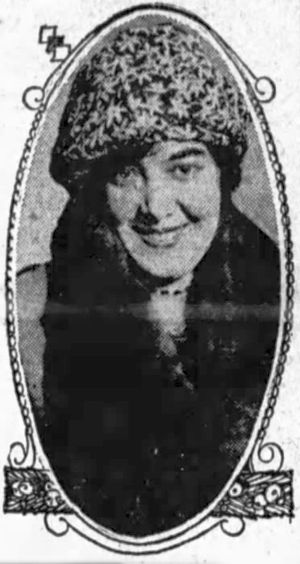 The daughter of a Russian-Greek sculptor and house decorator, Kapiton I.
Boshko. She studied in Paris and Berlin from 1911-1914, and made her debut
with the New York Philharmonic under Walter Damrosch - a story from her obituary
stating that being short, she lost her way among the music stand and retreated
in tears to the wings, Damrosch leaving the podium and guiding her to the piano
for a fine performance. She also performed for various European royalty, and her
career included the premiere concert in the then new Hollywood Bowl. She was
graduated from the Ethical Culture School, the Juilliard School of Music, and
the Dresden Conservatory.
Joseph BowmanMade at least one early hand-played roll (#100060 Vision of Salome Waltz). May be the same Joseph Bowman reported in Music Trade Review as owning a music store at 400 W. Madison St, Chicago in 1920.
The Burke Sisters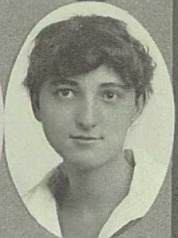 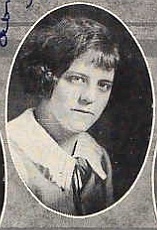 Lora Camilla Miller Burke Born: 2 or 22 July 1899 Moberly, Missouri Died: 5 June 1982 Moberly, Missouri Carlotta Ann Burke Barth Born: 24 July 1904 Moberly, Missouri Died: 1 March 1969 Clanton, Alabama Long thought yet another QRS house pseudonym, the Burke Sisters were very real people, and fascinating ones at that. Their sole roll, #3406 Je Vous Aime (I Love You), a ballad, was released in March 1926, and also offered as a Recordo expression roll. Lora was the daughter of a German farmer who had arrived in the USA in 1854. He prospered and became a banker, purchasing a palatial manor that Lora lived in for much of the rest of her life. Her father passed away of cancer in 1916, and in October 1920 she was married to city attorney Edmund Burke. Her musical training had occurred at the Goetze Conservatory of Music in Moberly, and post-graduate at Saint-Marys-In-The-Woords in Terra Haute, Indiana and with Joseph Lhevinne at the American Conservatory of Music in Chicago and Ellsworth McLeod at the piano school of Fine Arts in Univeristy of Missouri. She was also a prolific composer, including the Missouri State Song, and performed extensively on the concert stage and on radio with solo and duo-piano work, including being staff artist at NBC and making recordings for Brunswick. She appears to have started an act with Carlotta Burke around 1926, as they feature in various radio listings around that time. In 1935, she reunited with Carlotta Burke as "The Original Burke Sisters", and performed Rhapsody In Blue as a piano/organ duet. The article mentions "Mrs. Burke and Miss Burke toured vaudeville stages several years ago". 1936 saw one of her biggest hits as a composer, I Gave My Heart To You, featured by such dance orchestra leaders as Abe Lyman, Jan Garber, and Joe Sanders. By 1942 she was a member of the Burke-Robertson piano duo team with Olivia Robertson. In the 1970s a local newspaper was given a tour of her beautiful house, including her music room, where her Steinway grand was still in daily use. 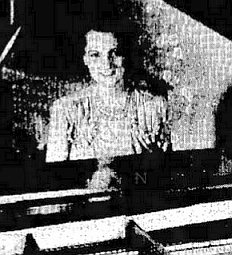 Lora in 1942 Carlotta, the daughter of an Illinois-born locomotive engineer of Irish ancestry, studied at Stephens College in Columbia, but resided in Moberly. She also briefly studied at the University of Southern California. Like Lora, she was an NBC staff artist for a time, playing from both New York and Los Angeles studios. An August 1926 radio listing shows her appearing with Lora Miller Burke as a piano duo, which is approximately the same time the roll was recorded, and also served as organist at a Sedalia theatre in 1929. In 1930 she was working as a theatre organist in South Sugar Creek, Missouri, and by 1938 she was working as a music teacher at public schools in Moberly, but resigned in 1939 to carry on her musical work. In March 1940 she married Milton C. Barth of Nashville, Tennessee and the couple relocated to Birmingham, Alabama. Milton died in 1958 aged just 48 in Clanton, Alabama where Carlotta stayed until her death - however, as late as 1961 she was still performing on a local Moberly radio station - advertised as 'Carlotta At the Baldwin - hear her at the console of the new model 46-P Baldwin Organ!'. Clifford L. Carney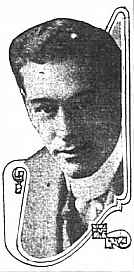 Born: 12 October 1887 Pittsburgh, PA Died: 26 January 1923 Pittsburgh, PA As early as 1899 the red-headed Clifford Leon Carney was making newspapers, dubbed 'The Little Paderewski', and reporting he was to leave for tuition in Europe. He graduated from the Pittsburgh Conservatory of Music in 1902 He married Nina on 28 February 1910 Credited as the artist on at least one QRS Autograph roll, #400062 Last Rose of Summer - (in chimes), a duet with 'Stanford Robar' (Lee S. Roberts) In 1911 he was present at a meeting of the Arcanum Lodge in Portland, where it was reported "C. L. Carney rendered several piano numbers. His nimble fingers fluttered over the ivory keys and his "rag-time" selections delighted the crowd of men". During the 1910s he made a name for himself accompanying popular vaudevillian Bob Albright, and became known as one of the top organists on the West Coast. leader of the band at the Great Lakes Naval Station during WWI. Daughter born 1920 in Portland. Divorced at time of death, which was from acute nephritis. Buried South Side Cemetery, Pittsburgh Wesley FordProbably pseudonym of Walter Lewis Ford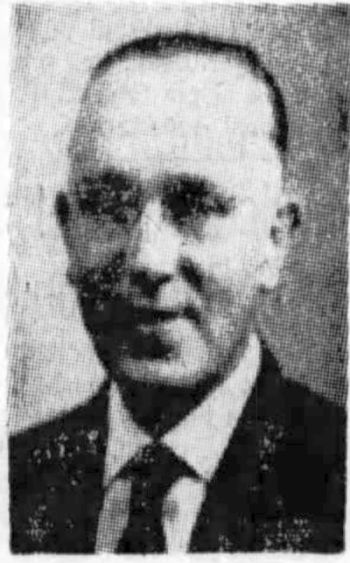 Born: 10 January 1893 Leeds, Yorkshire, England Died: 13 December 1964 Fresno, California This name appears on a few early QRS word rolls from March to September 1918 only and may be a pseudonym, or the non-de-plume of Walter Lewis Ford, who was a pianist and band-leader resident in Chicago at the time, and who also recorded a roll or two for Wurlitzer's Rolla Artis label. Born 10 January 1893 in Leeds, Yorkshire, England, he emigrated with his family in 1904 and settled in Cincinnati, Ohio A year later, at the age of 12, he was teaching piano to 26 pupils(!), and also played piano in Cincinnati's first movie house, Mill's Edisonia. At the age of 15, he enrolled in the University of Cincinnati to study mechanical engineering, while simultaneously studying music at the Cincinnati Conservatory. After graduating at age 18, he turned down a lucrative drafting job to become the leader of the pit band at the local vaudeville house. He married Ruth A. Bacon in 1913 in Indiana, and had at least one child. During the mid 1910s he also sometimes worked as Gene Green's pianist following the departure of Charley Straight and was also on the road as orchestra conductor for such musicals as 'The Chocolate Soldier'. One copyright composition of 1913, A Nice Plain Girl, lists Ford as the composer and the lyricist as Jack Blair, opening up another interesting possibility, since certain Welte rolls of the mid 1910s are credited as played by an artist by this name. In late June 1917, he enlisted as a corporal in the Signal Corps, aviation section, and saw service in the Hindenburg Line and participated in the Somme Offensive. His QRS rolls of March and April 1918 seem to line up well with a period when his unit had returned to the US, and soon after they departed again for a second tour of duty. At some point he was also director of a musical unit which toured rest areas with a troupe which included the great Elsie Janis - this show later becoming the nucleus of Irving Berlin's 'Yip Yip Yaphank' production. Following his demobilisation, Berlin hired him as manager and vocal arranger for his Chicago office, a job which included developing and writing special material for such Ziegfeld Follies stars as W. C. Fields and Bert Williams. The 1920 Census lists him as 'pianist - player co.' He married Winifred in 1921 and became a booking agent, managing theatrical bookings for up to 20 bands at one time, including such luminaries as Benny Goodman and Gene Krupka, and later moved to French Lick, Orange, Indiana as a director of hotel music, and later managing the entire resort. The later 1930s saw him continuing to act as a booking agent, pianist, arranger, and musical director for such performers as Isham Jones, Ben Bernie, Wayne King, Blossom Seeley, Sophie Tucker, the Dolly Sisters, and Harry Lauder. After leaving the music business, he resettled in Fresno, California, working as the sales manager for a hearing aid firm (Sonotone Corp.) and dabbling in kitchen design, using his drafting skills from earlier in life. He was also long-time pianist at the Sacramento Rotary Club for the last 20 years of his life. He died 13 December 1964 in Fresno, found by his wife seated upright in a rocking chair with the newspaper on his lap, and is interred in East Lawn Cemetery, Sacramento. F. O. Gamble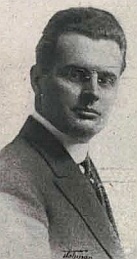 Born: 22 February 1878 Van Wirt, Ohio Died: 3 March 1943 Puyallup, Pierce, Washington Frederick Orion Gamble recorded a few early QRS handplayed rolls, including #40001 Believe Me If All Those Endearing Young Charms. Born in Van Wirt, Ohio, his first known position in the field was with the player department of Denton, Cottier & Daniels of Buffalo NY, but he soon moved to the Packard Co. of Fort Wayne, Indiana by 1908. He was regarded as an expert player demonstrator and was also a fine pianist, having accompanied a violinist at the Florida estate of Thomas Edison in 1910. By 1911 he was with Melville Clark and stayed there as manager of their Pacific Coast business until at least 1914, when he moved to E. Witzmann & Co. in Memphis, Tenn. as vice-president and general manager (following his marriage to the daughter of founder Emile Witzmann) and remained there until their liquidation to settle the estate in 1921. Following this, he had a number of positions, in 1922 alone moving from T. J. Paul Co. (Baltimore) to Reproducing Piano Studios, Inc., and finally the Aeolian Company, (both in New York City), from which he resigned just months later due to ill-health - which was compounded by losing his six year old daughter just weeks later. In 1923 he was back in Baltimore with Paul Co. as manager of the Knabe Studios. By 1930 he had left the profession and was a rancher in Pierce, Washington, and served as inspector for the American National Fox and Fur Breeders' Association. He died in Puyallup in 1943. During his time as a travelling demonstrator and salesman in the 1910s, he pursued courtship of Mary Louis Witzmann and wrote hundreds of letters, sometimes more than twice daily, which were donated by his son Fred. Jr. to the Memphis Public Library in the 1980s. Don F. Heath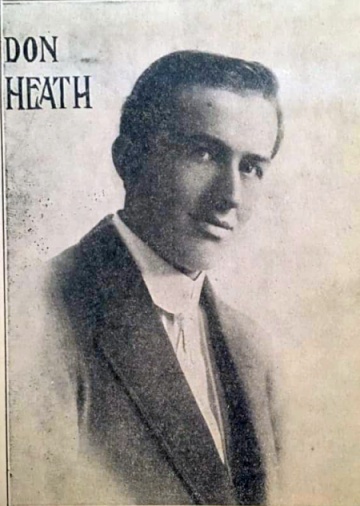 Born: 10 September 1880, Chicago, Illinois Died: 3 October 1938, Bedford, Virginia Heath was born Donald Heath Gestefeld in Chicago, the son of prominent Christian Scientist (founder of the New Thought philosophy) and religious writer Ursula Newell Gestefeld. As Don H. Gestefeld, he made his debut as a high baritone for the Henry W. Savage opera company in New York City and performed at the Theatorium in Wilmington, North Carolina. In 1910 he was living with his wife, Mary (nee. Roller), and son, Don R., in Charleston, South Carolina and working as a music teacher, and his daughter Ursula was born later that year. He worked for Tell Taylor in 1912 as manager of the New York branch, and knew composer George Fairman, and claimed a conversation with him about 'business down south' sparked the composition of Fairman's hit, 'Way Down South', which Heath recorded for QRS. A 1919 ad in Billboard magazine placed by M. Gestfield of Kenosha, Wisconsin, sought info on 'Don Heath, or Don Gestfield, last heard of as a piano player around Chicago'. This was probably placed by his mother, who was resident there and in poor health (she died there in 1921). However, by 1917 he had reinvented himself as Donald Fields Heath, and lists his job as 'chief inspector - chemical plant' in Akron Ohio, a job he still held in the 1920 census. He is also still associated with the Tell Taylor concern as late as 1922, and is musical director for various orchestras and events around Akron at the time. Heath is last seen in St Paul , Minnesota in the 1927-8 period, working as a musician, and in 1927 copyrighted a song named 'Sweet You', and at some time worked as the organist at the Garrick Theatre in Madisonville, Kentucky, but a series of strokes in the late 1920s robbed him of his ability to walk and write, and he became a patient at the Elks National Home in Bedford, VA from 1928, a retirement care home run by the benevolent Elks fraternity for the care of 'aged or indigent' members. His daughter pre-deceased him in 1933, but his son lived until age 90, passing away in 2007. Earl W. Hille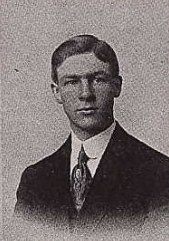 Born: 26 March 1889 Denver, Colorado Died: 28 July 1958 Montgomery, Kansas Earl W. Hille recorded just one roll, his own Rubber Heels Rag, aged just 22. This lawyer's son was prominent in musical and dramatic circles at Colorado College, he played their pipe-organ, acted as accompanist for the Glee Club, played for several church choirs, musical performer for the Apollonian Club, and was also a popular comedian and song and dance artist in their musical opera productions. He graduated as an electrical engineer in 1911 and followed this profession for a few years. He must have made a brief visit to Chicago to record his roll, which was released in November 1912. During the 1910s he also composed and copyrighted a few pieces of music and by 1920 he was a music store owner in Independence, Montgomery, Kansas which he ran with assistance from his wife and five children. He retained this profession until the end of his life, which came in 1958 aged 69. He is buried in Mount Hope Cemetery in Independence, Montgomery County, Kansas. Jim Harrington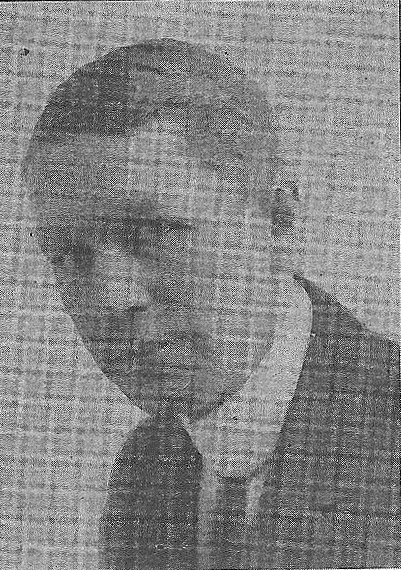 Born: 16 September 1873, Chelsea, Massachusetts Died: 29 October 1926, Bronx, New York
'James Henry (Jim) Harrington' was the professional name used by the man who, in
normal life, was named Hermon Dexter Ladd.
Born in Massachusetts to spring bed manufacturer Hermon Sr., he married Catherine Frances Wilson locally in September 1893, and 3 children were born. He played the piano in Austin and Stone's Museum, which occupied a grand building in Scollay Square (the premiere location of Boston's entertainment district) which advertised itself as America's largest dime museum (and offered vaudeville shows, performances, as well as exhibits). His first touring appearance I can locate is in the 30 January 1907 issue of the 'Poughkeepsie Eagle-News', where he is listed as performing in the Family Theatre as a whistling-piano duo with Florence Lester. "Mr. Harrington is a skilled pianist, and will surprise you with what he will make a piano do". His wife was ill with cancer, and it may have been this that prompted Harrington to seek better opportunities in Chicago, where he joined the Chicago offices of music publisher Jerome H. Remick in August 1909, alongside sometime fellow QRS artists Phil Schwartz and Riley McCowan. His wife died in 1910, and he later remarried a industry colleague, Pearle Mansfield (1893-1927) - the two collaborating on at least one musical composition, 'Cairo Dreams' (1921). In 1912 he moved from Remick to Snyder, and by October 1914 was working on his own account - taking offices at the New Gibbons Building and advertising his services as a music arranger. From 1912 to 1915 he also appeared in the vaudeville act 'Harrington, Mildred and Lester', and in the 1910s also played in Keith's Providence and the Henry Woodruff shows. The WWI draft card of 1917 states his occupation as 'musical director - United Booking Office, Palace Theatre' and has him residing at 302 Morris Ave in the Bronx, and further specifies he is tall, medium build, with blue eyes and blonde hair. Later in the 1910s, he settled into life as a musical arranger in New York, still being prominent enough for the Vaudeville column of the July 19, 1923 issue of Variety to note that 'the mother of James H. (Jim) Harrington died July 14'. Still active as an arranger in 1924, probably in the New York area, and recorded a test for Victor Records with Al Bernard and Frank Ferera on approval in October 1925, which was rejected and destroyed. Harrington died of pulmonary tuberculosis and bronchitis on 29 October 1926 at 2320 Grand Ave, the Bronx and is buried Arlington Cemetery, Delware, PA. Sadly, his wife was to die of the same disease only 6 months later, and was buried alongside him. C. C. Jones
|
| Born: | 29 August 1888 | Chicago, Illinois |
| Died: | 1 August 1975 | Chicago, Illinois |
Blind since the age of 10, he was a Chicago-based organist. He recorded his own "Zema Valse" for QRS in 1914.
Following the loss of his sight, he attended the school for the blind in Jacksonville and learned to read Braille. He studied music at Chicago's Central College of Music, and studied under Von Schiller and Edwin Schneider.
He married Eugenia "Jennie" Martin in 1910, a singer years his junior who was also blind, and they set up home in the Holleadean Hotel. After a short stint selling cigars, he learnt the organ by himself after the pianos in theatres began to be replaced by them.
He specialised in accompanying silent movies at the Famous Theatre, and matched his playing to the on-screen action by having an assistance sit on the organ bench with him and make certain movements to indicate what style of scene was playing out. In the case of marching or dancing the rhythm was tapped out on Boehler's leg. In 1929 he was mugged and robbed, but the robber was convicted on the strength of Boehler's evidence that he recognised his voice!
By 1930 he was working as a salesman for a peanut company, and in 1942 he was working at a courthouse in Chicago.
Victoria Boshko

Born: 7 August 1887
New York, NY
Died: 24 November 1977 East Hampton, NY
The daughter of a Russian-Greek sculptor and house descorator, Kapiton I.
Boshko. She studied in Paris and Berlin from 1911-1914, and made her debut
with the New York Philharomnic under Walter Damrosch - a story from her obituary
stating that being short, she lost her way among the music stand and retreated
in tears to the wings, Damrosch leaving the podium and guiding her to the piano
for a fine performance. She also performed for various European royalty, and her
career included the premiere concert in the then new Hollywood Bowl. She was
graduated from the Ethical Culture School, the Juilliard School of Music, and
the Dresden Conservatory.
By 1917 her technique was being described as "masterly", playing with "masculine
strength and sweeping the keyboard with stupendous chords". By 1921 she had been
out of contact with her father for 3 years, and was living at 362 Riverside
Drive, New York (knocking 5 years off her true age when applying for a
passport!) Her sister Nathalie was a violinist, and one article mentions
Victoria was also a talented painter
Following a minor local scandal where she took action against former Dallas
mayor Colonel Henry Lindsey for breach of promise for engagement of marriage,
she married her manager, Eugene Clement, an Armenian artist and theatre pianist
who was born under the name Herair Djidjian and arrived in the USA in 1921.
Their daughter Tamara was born in November 1928, and later became a well known
sculptor.
In 1936 her husband was naturalised, at which time he was working as an
antiquarian and interior decorator. They divided their time between New York and
Capri, Italy. In her late 80s, she continued to practise up to 3 hours daily,
and joked to friends and family her final ambition was to give one last concert
with full orchestral accompaniment, and then die on the concert stage.
Joseph Bowman
Made at least one early hand-played roll (#100060 Vision of Salome Waltz). May be the same Joseph Bowman reported in Music Trade Review as owning a music store at 400 W. Madison St, Chicago in 1920.The Burke Sisters


Lora Camilla Miller Burke
Born: 2 or 22 July 1899 Moberly, Missouri
Died: 5 June 1982 Moberly, Missouri
Carlotta Ann Burke Barth
Born: 24 July 1904 Moberly, Missouri
Died: 1 March 1969 Clanton, Alabama
Long thought yet another QRS house pseudonym, the Burke Sisters were very real people, and fascinating ones at that. Their sole roll, #3406 Je Vous Aime (I Love You), a ballad, was released in March 1926, and also offered as a Recordo expression roll.
Lora was the daughter of a German farmer who had arrived in the USA in 1854. He prospered and became a banker, purchasing a palatial manor that Lora lived in for much of the rest of her life. Her father passed away of cancer in 1916, and in October 1920 she was married to city attorney Edmund Burke. Her musical training had occurred at the Goetze Conservatory of Music in Moberly, and post-graduate at Saint-Marys-In-The-Woords in Terra Haute, Indiana and with Joseph Lhevinne at the American Conservatory of Music in Chicago and Ellsworth McLeod at the piano school of Fine Arts in Univeristy of Missouri.
She was also a prolific composer, including the Missouri State Song, and performed extensively on the concert stage and on radio with solo and duo-piano work, including being staff artist at NBC and making recordings for Brunswick. She appears to have started an act with Carlotta Burke around 1926, as they feature in various radio listings around that time.
In 1935, she reunited with Carlotta Burke as "The Original Burke Sisters", and performed Rhapsody In Blue as a piano/organ duet. The article mentions "Mrs. Burke and Miss Burke toured vaudeville stages several years ago". 1936 saw one of her biggest hits as a composer, I Gave My Heart To You, featured by such dance orchestra leaders as Abe Lyman, Jan Garber, and Joe Sanders. By 1942 she was a member of the Burke-Robertson piano duo team with Olivia Robertson. In the 1970s a local newspaper was given a tour of her beautiful house, including her music room, where her Steinway grand was still in daily use.

Lora in 1942
Carlotta, the daughter of an Illinois-born locomotive engineer of Irish ancestry, studied at Stephens College in Columbia, but resided in Moberly. She also briefly studied at the University of Southern California. Like Lora, she was an NBC staff artist for a time, playing from both New York and Los Angeles studios. An August 1926 radio listing shows her appearing with Lora Miller Burke as a piano duo, which is approximately the same time the roll was recorded, and also served as organist at a Sedalia theatre in 1929. In 1930 she was working as a theatre organist in South Sugar Creek, Missouri, and by 1938 she was working as a music teacher at public schools in Moberly, but resigned in 1939 to carry on her musical work. In March 1940 she married Milton C. Barth of Nashville, Tennessee and the couple relocated to Birmingham, Alabama. Milton died in 1958 aged just 48 in Clanton, Alabama where Carlotta stayed until her death - however, as late as 1961 she was still performing on a local Moberly radio station - advertised as 'Carlotta At the Baldwin - hear her at the console of the new model 46-P Baldwin Organ!'.
Clifford L. Carney

Born: 12 October 1887 Pittsburgh, PA
Died: 26 January 1923 Pittsburgh, PA
As early as 1899 the red-headed Clifford Leon Carney was making newspapers, dubbed 'The Little Paderewski', and reporting he was to leave for tuition in Europe.
He graduated from the Pittsburgh Conservatory of Music in 1902
He married Nina on 28 February 1910
Credited as the artist on at least one QRS Autograph roll, #400062 Last Rose of Summer - (in chimes), a duet with 'Stanford Robar' (Lee S. Roberts)
In 1911 he was present at a meeting of the Arcanum Lodge in Portland, where it was reported "C. L. Carney rendered several piano numbers. His nimble fingers fluttered over the ivory keys and his "rag-time" selections delighted the crowd of men".
During the 1910s he made a name for himself accompanying popular vaudevillian Bob Albright, and became known as one of the top organists on the West Coast.
leader of the band at the Great Lakes Naval Station during WWI.
Daughter born 1920 in Portland. Divorced at time of death, which was from acute nephritis.
Buried South Side Cemetery, Pittsburgh
Wesley Ford
Probably pseudonym of Walter Lewis Ford
Born: 10 January 1893 Leeds, Yorkshire, England
Died: 13 December 1964 Fresno, California
This name appears on a few early QRS word rolls from March to September 1918 only and may be a pseudonym, or the non-de-plume of Walter Lewis Ford, who was a pianist and band-leader resident in Chicago at the time, and who also recorded a roll or two for Wurlitzer's Rolla Artis label.
Born 10 January 1893 in Leeds, Yorkshire, England, he emigrated with his family in 1904 and settled in Cincinnati, Ohio A year later, at the age of 12, he was teaching piano to 26 pupils(!), and also played piano in Cincinnati's first movie house, Mill's Edisonia.
At the age of 15, he enrolled in the University of Cincinnati to study mechanical engineering, while simultaneously studying music at the Cincinnati Conservatory. After graduating at age 18, he turned down a lucrative drafting job to become the leader of the pit band at the local vaudeville house. He married Ruth A. Bacon in 1913 in Indiana, and had at least one child. During the mid 1910s he also sometimes worked as Gene Green's pianist following the departure of Charley Straight and was also on the road as orchestra conductor for such musicals as 'The Chocolate Soldier'.
One copyright composition of 1913, A Nice Plain Girl, lists Ford as the composer and the lyricist as Jack Blair, opening up another interesting possibility, since certain Welte rolls of the mid 1910s are credited as played by an artist by this name.
In late June 1917, he enlisted as a corporal in the Signal Corps, aviation section, and saw service in the Hindenburg Line and participated in the Somme Offensive.
His QRS rolls of March and April 1918 seem to line up well with a period when his unit had returned to the US, and soon after they departed again for a second tour of duty. At some point he was also director of a musical unit which toured rest areas with a troupe which included the great Elsie Janis - this show later becoming the nucleus of Irving Berlin's 'Yip Yip Yaphank' production. Following his demobilisation, Berlin hired him as manager and vocal arranger for his Chicago office, a job which included developing and writing special material for such Ziegfeld Follies stars as W. C. Fields and Bert Williams.
The 1920 Census lists him as 'pianist - player co.' He married Winifred in 1921 and became a booking agent, managing theatrical bookings for up to 20 bands at one time, including such luminaries as Benny Goodman and Gene Krupka, and later moved to French Lick, Orange, Indiana as a director of hotel music, and later managing the entire resort. The later 1930s saw him continuing to act as a booking agent, pianist, arranger, and musical director for such performers as Isham Jones, Ben Bernie, Wayne King, Blossom Seeley, Sophie Tucker, the Dolly Sisters, and Harry Lauder.
After leaving the music business, he resettled in Fresno, California, working as the sales manager for a hearing aid firm (Sonotone Corp.) and dabbling in kitchen design, using his drafting skills from earlier in life. He was also long-time pianist at the Sacramento Rotary Club for the last 20 years of his life. He died 13 December 1964 in Fresno, found by his wife seated upright in a rocking chair with the newspaper on his lap, and is interred in East Lawn Cemetery, Sacramento.
F. O. Gamble

Born: 22 February 1878 Van Wirt, Ohio
Died: 3 March 1943 Puyallup, Pierce, Washington
Frederick Orion Gamble recorded a few early QRS handplayed rolls, including #40001 Believe Me If All Those Endearing Young Charms. Born in Van Wirt, Ohio, his first known position in the field was with the player department of Denton, Cottier & Daniels of Buffalo NY, but he soon moved to the Packard Co. of Fort Wayne, Indiana by 1908. He was regarded as an expert player demonstrator and was also a fine pianist, having accompanied a violinist at the Florida estate of Thomas Edison in 1910. By 1911 he was with Melville Clark and stayed there as manager of their Pacific Coast business until at least 1914, when he moved to E. Witzmann & Co. in Memphis, Tenn. as vice-president and general manager (following his marriage to the daughter of founder Emile Witzmann) and remained there until their liquidation to settle the estate in 1921.
Following this, he had a number of positions, in 1922 alone moving from T. J. Paul Co. (Baltimore) to Reproducing Piano Studios, Inc., and finally the Aeolian Company, (both in New York City), from which he resigned just months later due to ill-health - which was compounded by losing his six year old daughter just weeks later. In 1923 he was back in Baltimore with Paul Co. as manager of the Knabe Studios.
By 1930 he had left the profession and was a rancher in Pierce, Washington, and served as inspector for the American National Fox and Fur Breeders' Association. He died in Puyallup in 1943. During his time as a travelling demonstrator and salesman in the 1910s, he pursued courtship of Mary Louis Witzmann and wrote hundreds of letters, sometimes more than twice daily, which were donated by his son Fred. Jr. to the Memphis Public Library in the 1980s.
Don F. Heath

Born: 10 September 1880, Chicago, Illinois
Died: 3 October 1938, Bedford, Virginia
Heath was born Donald Heath Gestefeld in Chicago, the son of prominent Christian Scientist (founder of the New Thought philosophy) and religious writer Ursula Newell Gestefeld. As Don H. Gestefeld, he made his debut as a high baritone for the Henry W. Savage opera company in New York City and performed at the Theatorium in Wilmington, North Carolina. In 1910 he was living with his wife, Mary (nee. Roller), and son, Don R., in Charleston, South Carolina and working as a music teacher, and his daughter Ursula was born later that year. He worked for Tell Taylor in 1912 as manager of the New York branch, and knew composer George Fairman, and claimed a conversation with him about 'business down south' sparked the composition of Fairman's hit, 'Way Down South', which Heath recorded for QRS.
A 1919 ad in Billboard magazine placed by M. Gestfield of Kenosha, Wisconsin, sought info on 'Don Heath, or Don Gestfield, last heard of as a piano player around Chicago'. This was probably placed by his mother, who was resident there and in poor health (she died there in 1921). However, by 1917 he had reinvented himself as Donald Fields Heath, and lists his job as 'chief inspector - chemical plant' in Akron Ohio, a job he still held in the 1920 census. He is also still associated with the Tell Taylor concern as late as 1922, and is musical director for various orchestras and events around Akron at the time.
Heath is last seen in St Paul , Minnesota in the 1927-8 period, working as a musician, and in 1927 copyrighted a song named 'Sweet You', and at some time worked as the organist at the Garrick Theatre in Madisonville, Kentucky, but a series of strokes in the late 1920s robbed him of his ability to walk and write, and he became a patient at the Elks National Home in Bedford, VA from 1928, a retirement care home run by the benevolent Elks fraternity for the care of 'aged or indigent' members. His daughter pre-deceased him in 1933, but his son lived until age 90, passing away in 2007.
Earl W. Hille

Born: 26 March 1889 Denver, Colorado
Died: 28 July 1958 Montgomery, Kansas
Earl W. Hille recorded just one roll, his own Rubber Heels Rag, aged just 22. This lawyer's son was prominent in musical and dramatic circles at Colorado College, he played their pipe-organ, acted as accompanist for the Glee Club, played for several church choirs, musical performer for the Apollonian Club, and was also a popular comedian and song and dance artist in their musical opera productions.
He graduated as an electrical engineer in 1911 and followed this profession for a few years. He must have made a brief visit to Chicago to record his roll, which was released in November 1912. During the 1910s he also composed and copyrighted a few pieces of music and by 1920 he was a music store owner in Independence, Montgomery, Kansas which he ran with assistance from his wife and five children. He retained this profession until the end of his life, which came in 1958 aged 69. He is buried in Mount Hope Cemetery in Independence, Montgomery County, Kansas.
Jim Harrington

Born: 16 September 1873, Chelsea, Massachusetts
Died: 29 October 1926, Bronx, New York
'James Henry (Jim) Harrington' was the professional name used by the man who, in normal life, was named Hermon Dexter Ladd.
Born in Massachusetts to spring bed manufacturer Hermon Sr., he married Catherine Frances Wilson locally in September 1893, and 3 children were born. He played the piano in Austin and Stone's Museum, which occupied a grand building in Scollay Square (the premiere location of Boston's entertainment district) which advertised itself as America's largest dime museum (and offered vaudeville shows, performances, as well as exhibits). His first touring appearance I can locate is in the 30 January 1907 issue of the 'Poughkeepsie Eagle-News', where he is listed as performing in the Family Theatre as a whistling-piano duo with Florence Lester. "Mr. Harrington is a skilled pianist, and will surprise you with what he will make a piano do".
His wife was ill with cancer, and it may have been this that prompted Harrington to seek better opportunities in Chicago, where he joined the Chicago offices of music publisher Jerome H. Remick in August 1909, alongside sometime fellow QRS artists Phil Schwartz and Riley McCowan.
His wife died in 1910, and he later remarried a industry colleague, Pearle Mansfield (1893-1927) - the two collaborating on at least one musical composition, 'Cairo Dreams' (1921). In 1912 he moved from Remick to Snyder, and by October 1914 was working on his own account - taking offices at the New Gibbons Building and advertising his services as a music arranger. From 1912 to 1915 he also appeared in the vaudeville act 'Harrington, Mildred and Lester', and in the 1910s also played in Keith's Providence and the Henry Woodruff shows. The WWI draft card of 1917 states his occupation as 'musical director - United Booking Office, Palace Theatre' and has him residing at 302 Morris Ave in the Bronx, and further specifies he is tall, medium build, with blue eyes and blonde hair.
Later in the 1910s, he settled into life as a musical arranger in New York, still being prominent enough for the Vaudeville column of the July 19, 1923 issue of Variety to note that 'the mother of James H. (Jim) Harrington died July 14'. Still active as an arranger in 1924, probably in the New York area, and recorded a test for Victor Records with Al Bernard and Frank Ferera on approval in October 1925, which was rejected and destroyed.
Harrington died of pulmonary tuberculosis and bronchitis on 29 October 1926 at 2320 Grand Ave, the Bronx and is buried Arlington Cemetery, Delware, PA. Sadly, his wife was to die of the same disease only 6 months later, and was buried alongside him.
C. C. Jones
Born: 9 June 1883, Creston, Iowa.Died: 9 June 1931, Los Angeles, California
Clarence Chester Jones was a Chicago-based pianist who recorded early QRS Autograph rolls from July 1912.
Born in Iowa as the son of an English immigrant master mechanic, by 1910 he was present in Chicago and working as a musician for a music house. He married Elizabeth Dorothy Gilbert, four years his junior and the daughter of Swiss immigrants, in Chicago on 24 February 1912.
By the 1917 WW1 Draft he was employed by Waterson, Berlin & Snyder as a pianist, and listed himself as being tall and slender with grey eyes and brown hair, and his next of kin being Elizabeth Dorothy Jones of the same address (3954 Rokeby St, Chicago).
In 1920 he was still resident in Chicago, rooming in Grace Street with his wife and working as an orchestra pianist
By 1930 he had relocated to Los Angeles, working as a theatre musician. He died there on his 46th birthday of epidermoid carcinoma of tongue, survived only by his wife, and was laid to rest in Inglewood Cemetery.
Gertrude E. Max
Born: 15 October 1887, TexasDied: 5 October 1968, Walnut Creek, California
This San Francisco based pianist was much in demand as an accompanist, and was described as having a 'limpid touch and fluent technique'. Born Gertrude Eleanor Max of a French mother and Russian father (a hotel proprieter), the 1900 census records them resident in the Fort Worth area. She was captured twice in the 1910 census, both boarding in New Orleans and working as a saleslady at a music store and boarding in San Francisco as a musician for a music house. She studied theory, harmony, and composition under W. J. McCoy, and composed a number of songs and also taught.
In 1916 she surprised her 'wide circle of friends' by marrying wealthy and prominent whoesale grocery businessman Albert George Lang, 20 years her senior. At the time she gave her date of birth as 1893, and preferred to use dates between 1891-1893 for the remainder of her life.
Resident in the Palace and Mark Hopkins hotel for a number of years, she was widowed in 1943, and by 1952 was resident at 1000 Mason St.
Riley McCowan
b. 8 March 1886, Custer, Michigand. 3 November 1952, Paris, Kent, Michigan.
Riley Conrad McCowan was the first non-staff artist to record hand-played rolls for QRS, #100003 and #100004, Oceana Roll and Dahomean Queen Rag, being #3 and #4 released in the hand-played popular series in July 1912. Orphaned early in life, he grew up with his mother and stepfather (a hardware merchant) in Grand Traverse, Michigan.
The first mention of his musical career is a report in a 1902 New York Clipper mentioning him as part of a touring vaudeville act with 'piano and silent act'.
By 1908, he was resident in Chicago, when he married Nance Mildred Oliver. The marriage was apparently not a success, since he remarried Belle Bailey Stevens in November 1924. His QRS recordings date from 1912, at which time he was apparently working for Jerome H. Remick & Co. in their Chicago office, along with fellow QRS recording artists Jim Harrington and Phil Schwartz. A few years later, when filling out his WW1 draft card in 1917, he lists his profession as 'inspector, Eddystone Rifle Co.' and was living in Philadelphia, PA. His first marriage had apparently already failed since his mother is listed as his next of kin. In 1918 he collaborated with the great Haven Gillespie on a patriotic song called 'More Power To Your Knitting, Nell!'.
At the time of his second marriage, he listed himself as a 'merchant'. The 1940 census lists him as an orchestra musician, resident in Grand Rapids, Michigan. By 1930 he was working as an auto salesman in Oceana, Michigan, with Belle and son William F. McCowan (b. 1926). but by 1940 he'd re-entered the music field. By the 1942 draft he was working as a music teacher in Grand Rapids, Michigan. His wife died in 1944, and as late as 1948 he was performing with Danny Noggles And His Swing Band in Holland, Michigan. He is buried at Oak Hill Cemetery.
Prudence Neff

Born: 9 June 1887 Nebraska
Died: 23 December 1949 Chicago, IL
Early Autograph artists with the heavier classical repertoire. Of Swiss-German ancestry, her father was a railroad engineer in Nebraska. She married Robert Dolejsi (b. 1894) in Birmingham, Alabama on 24 November 1915. Robert taught violin and Prudence piano at the Southern School of Musical Art in Alabama, but the marriage did not last.
Amongst her musical accomplishments, she performed with the Russian Symphony Orchestra and also the Chicago and Minneapolis Symphony Orchestras, as well as accompanying soprano Florence Hinkle. She also taught at the Chicago College of Music and the Cosmoplitan School of Music.
She later married window trimmer Wade H. Thomas and is resident with him and her sister in Chicago, in 1930, listing herself as a concert pianist, but was widowed in 1933 when he died aged 38 (She was reticent to reveal her true age in official documents as both her husbands were considerably younger than her). She worked as a piano teacher at her residence of 397 Montclair Ave, Chicago until her death, and is buried in St Joseph's Cemetery in River Grove, Illinois.
William M. Redfield
Born: 24 May 1867, New YorkDied: 27 May 1938, Queens, New York.
William Moore Redfield was a professional arranger who probably never worked directly for QRS, but received credit on many of their 1910s arranged rolls, as these were probably arranged directly from published scores orchestrated by Redfield.
He was born in New York, and the first mention comes in a report of an 1889 state fair in Connecticut, where he is described as "solo cornetist of the noted Colt's Band". He was living in Hartford when he married Orianna in Michigan in 1893 - listing himself as a musician in the register. The family was in Detroit at the time of the 1900 census but by 1905 had relocated to Brooklyn, New York. In 1919, he was appointed manager of the band and orchestra department of C. C. Church & Co., Hartford, Conn. By 1925 both his children were musically involved - Catherine as an opera singer and Henry C. as a musical director, while Redfield describes himself as a musical arranger. Between the two censii he had spent some time as manager of the Eastern Music Co. in Hartford, which was a syndicate that operated the sheet music department in several large department stores. Redfield is described as having been connected with the music business for many years as well as being the leader of the Governor's Foot Guard Band of Connecticut. He also found time to compose music, including Governor's March.
In the 1930 census he specifies Remick Music Corp. as his employer, and his daughter is still at home working as a concert singer on radio. In September 1936 he suffered a tragedy when his son was killed in a New York hotel fire, having fallen asleep while smoking. William himself died two years later, just 3 days after his 71st birthday and was returned to Michigan for burial at Riverside Cemetery, Albion. His wife joined him there in 1952, having outlived their daughter Catherine, who was also interred there in 1945.
William's grandson, also named William Redfield, was a known Broadway performer from the 1930s, transitioning to film and television. His best known role was in 'One Flew Over The Cuckoos Nest', but during filming he was diagnosed with leukaemia and died aged 49 in 1976.
Robert E. Redgate
Born: 18 April 1880, ConnecticutD: 4 January 1929, Manhattan, New York
Robert Edward Redgate made some early hand-played popular recordings for QRS. The son of an Irish immigrant blacksmith,
George A. his brother was also a musician. Father blacksmith.
In the 1917 WW1 draft he was serving as the musical director of the Van Cortlandt Hotel.
The last official record for him is the 1925 State Census, listing him as musician.
Buried in the Monravian Cemetery, Staten Island, New York.
Reynolds, Opal (Mrs Glenn Reynolds)
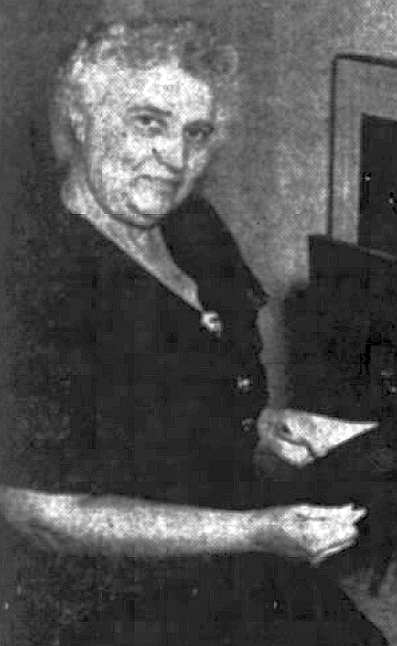
D: 12 September 1981, Carlsbad, NM
Opal Reynolds (sometimes credited as 'Mrs Glenn Reynolds") made a few early hand-played rolls of ragtime and popular tunes for QRS.
Born Edith Opal Padgitt, she started her professional career at age 12, playing in a summer resort hotel, the Prospect Heights on the Illinois River at Peoria, and also played several seasons on the City Of Peoria - an excursion boat on the Illinois and Mississippi rivers. She also did hotel orchestral work, and was a pianist with various dance orchestras.
In 1907 she married Glenn Walter Reynolds, a prominent DeKalb citizen who later served for 20 years as Secretary of the DeKalb Chamber of Commerce, and the couple adopted a son, Chester, who also played piano and became a doctor. The couple settled in DeKalb, where, of course, the Melville Clark/QRS concern originated. Her QRS rolls date from approximately 1912-1913.
Continuing her musical career, she was a prominent teacher in DeKalb and also at various times accompanied the Marx Brothers, Blossom Seely, Otis Skinner, and continued her own study under fellow QRS artist Theodora Sturkow-Ryder and also at the Sherwood School of Music in Chicago. In later years her interested included building a substantial record collection and maintaining a large garden. Her photo dates from 1951.
Her husband died suddenly in 1953, but she survived until age 97, passing away at a retirement home in New Mexico.
Harold M. Triggs
B: 25 December 1900, Denver, COD: July 1984, Thomasville, GA
Harold Melvin Triggs made his roll debut for QRS in January 1917, having only just turned 16. He studied with Josef Lhevinne
He was capable of the heavier repertoire such as Liszt etudes.
His father, Harry A. Triggs, was director of the H. A. Triggs Music Co. in Colorado, which sold pianos, organs, music, and phonographs.
He also demonstrated the Apollo reproducing system in comparison concerts in Chicago in the early 1920s. In 1932 he formed a duo-piano team with Vera Brodsky, whom he had met at the Salzberg festival abroad, and achieved rapid success - Leopold Godowsky was so impressed that he dedicated his transcription of Alt Wien to them. The partnership endured until 1936.
Ernesto Voitier
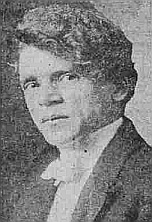
B: 29 February 1872, France
D:
Mr. Voitier was French, the son of a Thomas Voitier and Charlotte Harris or Hanns. He studied with Raoul Pugno in Paris and music theory with Sir John Stainer in London. He made a concert tour of the USA in 1905. He seems to have moved there permanently in aronud 1910, and by early 1911 he was in Chicago with rooms at Kimball Hall, describing himself as having 20 years of experience as a soloist and teacher, and was engaged by QRS in February of that year as an 'expert harmonist and pianist for the elaboration and detail work of the "Department of Musical Expression" in connection with music rolls'. The article also mentioned he was to make his home in DeKalb. In July 1911 an Ernesto Voitier married Belle Marchand/Mershon in Aurora, Illinois and the same parties were divorced in Denver, Colorado on 24 June 1915. In March of that year, an article appeared in local Chicago newspapers speculating on his disappearance and mentioning financial issues and the fact detectives were seeking his assistance with explaining 'certain transactions'. In 1915 Oregon newspapers he's described as the 'European concert pianist who is spending the winter in Portland (with) Mrs. Voitier'.
His wife was also apparently a pianist, as mentioned in yet another article. This is probably Mildred Mack, whom records show marrying an Ernest Voitier in Lake, Indiana on 30 August 1915, just a couple of weeks previously to the sudden burst of Portland newspaper articles. Of Austrian-Bohemian parents, by 1920 she is living with her sister's family in Chicago and describes herself as a music teacher and single - so the marriage may have broken down. This is the final mention of Ernest in US genealogical records, suggesting an early death or departure from the USA. A review of a concert in the same paper describes him as a 'poet, an idealist, and impressionist.... he plays caressingly, and always with warmth and romantic feeling.. The delicacy of Voitier's piano playing is notable. It is after the whispery, lace-like effects produced by De Pachmann and Godowsky.' and mentions he was taught by Pugno in Paris, had been living in Chicago, and that he had planned to return to Europe but this plan was made impossible by the war and that he was to make his future home in Portland.
Dorian Welch
This name appears on early QRS hand-played rolls and is most probably a
pseudonym of Theodora Sturkow-Ryder for her ventures into lighter styles of
music, as her name appears as the copyright owner for a 1917 composition by
Welch.Roy Wetzel
Born: 6 March 1895Died: 21 December 1991, Chicago, Illinois
Maurice Schwab Wetzel. He also recorded one roll for US, in June 1924 (Rose, a fox-trot composed by Zeph Fitzgerald, a friend of Wetzel's). Hailing from Max Kortlander's hometown of Grand Rapid, Michigan, he was friends with the Kortlander family - and in 1966 QRS recorded a new rag Wetzel had composed called 'Interference - a Ragtime Specialty'. In later years he was also a member of AMICA.
Russ Wildey
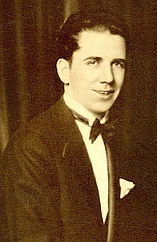
Born: 6 August 1898 Chicago, Illinois
Died: 8 March 1964 Garden Grove, Orange, California
Russell N. Wildey recorded just one roll for QRS, #3499 Down Where The Sweet Magnolia Blooms, a waltz released in July 1926 .He played the clarinet with Sousa's band during WWI, and was proficient on most instruments, including the ukelele. By 1927, he had teamed with comedian-singer Billy Sheehan as a popular radio duo, known as the 'Ray-O-Vac Twins'. The partnership lasted until mid 1929.
The 1940 Census shows him living in Chicago with second wife Nathalie Colle, who he had married in 1935, and children Janis, Russell Jr., and Robert, and working as a theatre actor. Two more children were to follow later.
